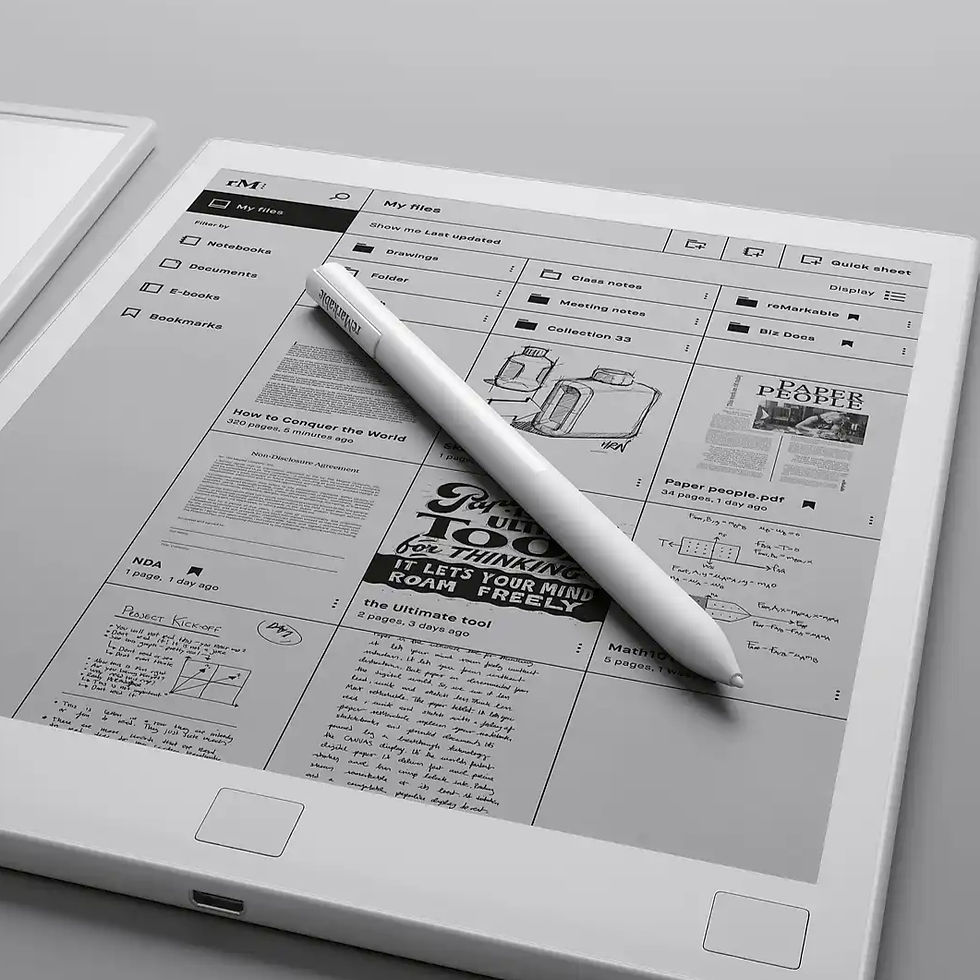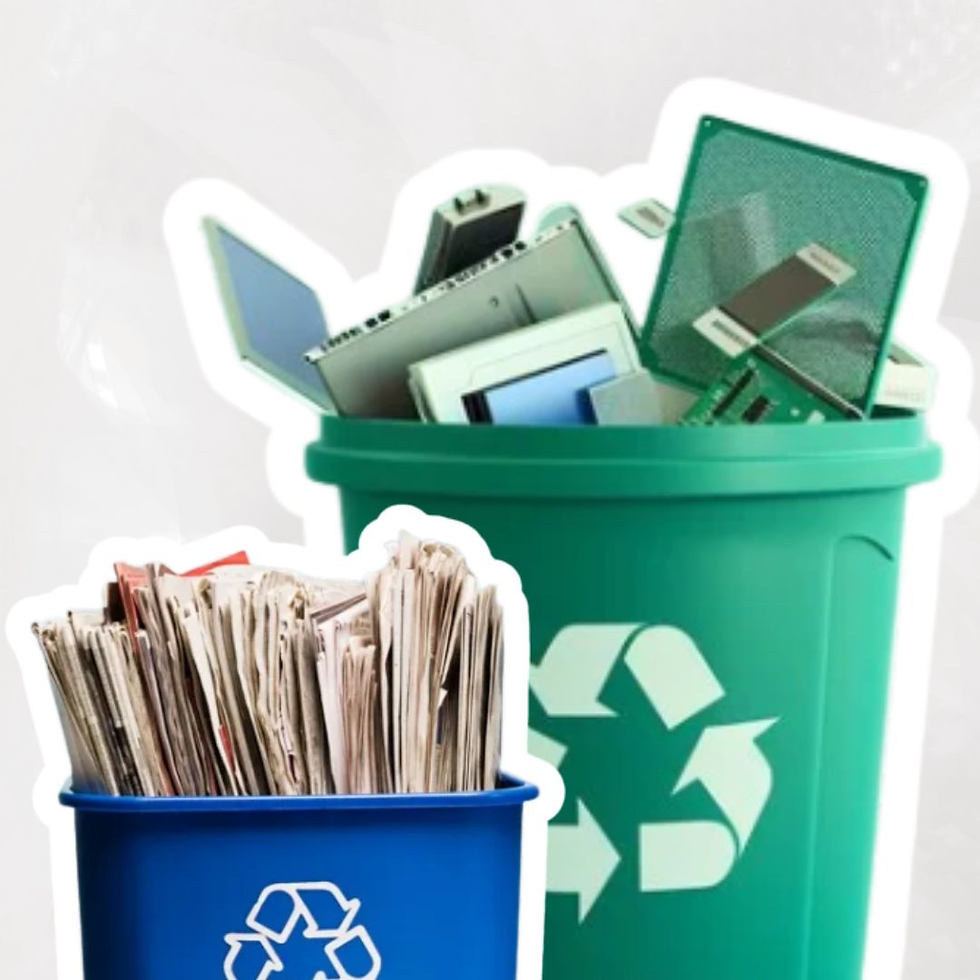The Return of Handwritten Notes: A Cultural Rebellion?
- Mrinal Yadav
- Jul 10
- 6 min read
Updated: Jul 13
Why young people are choosing handwritten notes? A deep dive into why Gen Z and millennials are trading keyboards for ballpoint pens
In coffee shops across Brooklyn, university libraries in Berlin, and coworking spaces in Bangalore, a quiet revolution is unfolding. Young professionals are pulling out leather-bound journals instead of laptops. Students are reaching for fountain pens over tablets. The analog is making a comeback, and it's not just about nostalgia.
We're witnessing something unprecedented: the first generation to grow up fully digital is consciously choosing analog tools for their most important thoughts. This isn't just a trend; it's a cultural rebellion against the very systems that raised them.
The Paradox of Digital Natives Going Analog
The irony is striking. The generation that learned to swipe before they could walk, that grew
up with smartphones as extensions of their hands, is now buying vintage typewriters and hand-bound notebooks. This isn't happening in a vacuum. It's a response to something deeper - a growing awareness that our relationship with technology might be fundamentally broken.
The demand for simple feature phones is growing as part of a digital detox trend, and handwritten notes are riding this wave. But unlike the broader digital detox movement, this isn't about rejection. It's about intentional choice.
Sarah Martinez, a 26-year-old marketing strategist from Austin, switched to handwritten notes two years ago. "I realized I was taking meeting notes on my laptop but never actually processing them," she explains. "When I write by hand, I'm forced to be selective. I can't just transcribe everything.. I have to think about what matters."
This selective processing is exactly what makes handwritten notes so powerful. When you can't copy-paste or type at the speed of speech, you're forced to engage with information differently. You become an active participant rather than a passive recorder.
The Science Behind the Pen

Recent neuroscience research has provided compelling evidence for what many have intuitively felt: handwriting engages our brains in ways that typing simply cannot replicate. A recent study in Frontiers in Psychology monitored brain activity in students taking notes and found that those writing by hand had higher levels of electrical activity across a wide range of interconnected brain regions responsible for movement, vision, sensory processing and memory. This isn't just about memory retention (though that's certainly part of it). Scientists think that the slow process of tracing out letters and words gives individuals more time to process the material and learn. When you write by hand, you're not just recording information; you're actively transforming it. The implications extend far beyond academic performance. Research suggests kids learn to recognize letters better when seeing variable handwritten examples, compared with uniform typed examples. This variability- the slight differences in each letter we write, actually strengthens cognitive connections.
For a generation that's been optimized for efficiency, this inefficiency becomes a feature, not a bug. The friction of handwriting creates space for reflection, for second thoughts, for the kind of deep processing that leads to genuine understanding.
The Aesthetic of Authenticity
But the return to handwritten notes isn't just about cognitive benefits. It's also about authenticity in an increasingly artificial world. In an era of AI-generated content and algorithmic feeds, handwriting represents something irreducibly human.
In 2025, we are seeing a resurgence of handwritten typography styles that evoke warmth, authenticity, and personal connection. This trend reflects a broader cultural shift towards valuing individuality and craftsmanship in an increasingly automated world.
This desire for authenticity manifests in unexpected ways. Bullet journaling, which combines handwritten planning with artistic expression, has exploded in popularity among young adults. Instagram accounts dedicated to "study aesthetics" feature carefully curated images of handwritten notes, colored pens, and artfully arranged stationery.
The aesthetic appeal isn't superficial, it's deeply connected to identity formation. In a world where much of our creative output is mediated by algorithms and templates, handwriting becomes a form of self-expression. Your handwriting is uniquely yours, as individual as your fingerprint.
The Rebellion Against Optimization
Perhaps most significantly, the handwritten note represents a rebellion against the tyranny of optimization. Digital tools promise to make us more efficient, more productive, more connected. But efficiency isn't always what we need.
Sometimes we need to be inefficient. Sometimes we need to slow down, to let our thoughts meander, to make mistakes that we can't easily delete. The messiness of handwritten notes, the crossed-out words, the marginal doodles or the varying letter sizes, they all reflect the messiness of human thought.
This rebellion is particularly pronounced among knowledge workers who spend their days in optimized digital environments. For them, handwritten notes become a form of resistance against the quantified self. They're choosing process over product, reflection over efficiency.
The Corporate Response

Interestingly, the corporate world is taking notice. Global Handwriting Digital Pens market size is expected to reach $7.98 billion by 2029 at 14%, business digitization driving handwriting digital pen market growth, suggesting that even tech companies recognize the value of handwriting.
Companies like ReMarkable and Rocketbook have built entire business models around bridging the gap between analog and digital. The ReMarkable 2 gets nearly everything else right. This includes a distraction-free design that uses no pop-ups or pesky notifications, a UI that lets you quickly organize all your files, and a pen that comes with a built-in eraser.
But these hybrid solutions, while practical, might miss the point. The appeal of handwritten notes isn't just about the physical act of writing, it's about disconnection. It's about creating space that exists outside the networked world.
The Social Dimension
The return to handwritten notes is also fundamentally social. In a world where our digital communications are increasingly surveilled and archived, handwritten notes offer a form of privacy that feels almost radical.
There's something intimate about handwritten communication that transcends its practical benefits. Love letters, condolence cards, thank-you notes; these are the most meaningful communications in our lives are still often handwritten. The choice to write by hand signals intentionality and care.
In professional settings, handwritten notes can create unexpected connections. The executive who sends handwritten thank-you notes, the teacher who provides handwritten feedback, the friend who still sends birthday cards- these gestures stand out precisely because they're becoming rare.
The Environmental Angle

Paradoxically, the return to handwritten notes might also be an environmental statement. While paper production has environmental costs, the lifecycle of a notebook is often more sustainable than the constant upgrading of digital devices.
A quality notebook can last for years, requires no charging, and doesn't become obsolete. In contrast, our digital devices require constant energy, regular updates, and eventual replacement. For environmentally conscious young adults, handwritten notes represent a lower-tech, more sustainable approach to information management.
The Challenges and Limitations
Of course, the return to handwritten notes isn't without challenges. Handwritten notes can't be easily shared, searched, or backed up. They're vulnerable to loss, water damage, and the simple passage of time. For many purposes, digital tools remain superior.
The key is recognizing that this isn't an either-or proposition. The most effective approach might be hybrid: using handwritten notes for initial processing and reflection, then digitizing important information for long-term storage and sharing.
The Future of Analog in a Digital World
As we look toward the future, the trend toward handwritten notes suggests something important about human nature. Despite our increasing integration with digital systems, we still crave tactile experiences, slower rhythms, and unmediated connection with our thoughts.
This doesn't mean we're rejecting technology, it means we're becoming more intentional about how we use it. The generation that grew up with infinite digital options is learning to choose analog tools for specific purposes.
The return to handwritten notes might be the beginning of a broader movement toward intentional technology use. As we become more aware of the costs of constant connectivity, we're seeking tools and practices that help us reclaim our attention and our thoughts.
The Deeper Cultural Shift
What we're witnessing isn't just a trend. It's a cultural shift toward mindfulness, authenticity, and intentional living. Handwritten notes are part of a broader rejection of the always-on culture that has dominated the past two decades.
Young adults are choosing to be present, to be deliberate, to be human in ways that digital tools don't always support. They're recognizing that efficiency isn't always the goal, sometimes the goal is understanding, connection, and genuine engagement with ideas.
Conclusion: Writing Our Way Forward
The return of handwritten notes represents more than nostalgia or contrarianism. It's a recognition that human cognition and digital systems aren't always perfectly aligned. Sometimes we need tools that slow us down, that force us to be selective, that connect us to our thoughts in more tactile ways.
As we navigate an increasingly digital future, the humble handwritten note might be one of our most important tools for staying human. In a world of infinite information, the constraint of the blank page becomes liberating. In a world of instant communication, the deliberate pace of handwriting becomes meditative.
The rebellion isn't against technology, it's for humanity. And sometimes, the most radical act is simply putting pen to paper and letting your thoughts flow at the speed of ink.




Comments